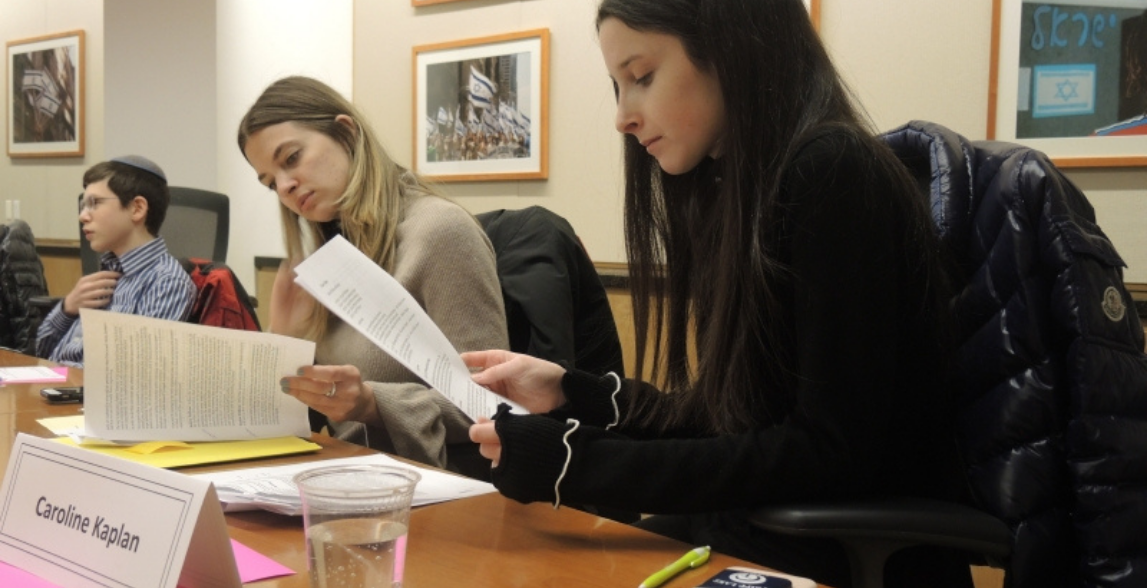When Amplifier launched its first Jewish Giving Circle Incubator cohort this past fall, several dozen Jewish leaders signed on to bring giving circles to their own communities, recruiting friends and colleagues with similar values to pool their finances and give to causes they support. One of these leaders, Lom Friedman, Director of Youth Philanthropy at the San Francisco-based Jewish Community Federation and Endowment Fund, saw this as an opportunity to make giving circles a new branch of their Jewish Teen Foundations’ (JTF) alumni experience.
A Jewish teen foundation, such as those in the Jewish Teen Funders Network, commonly gathers 18-25 high school students for regular weekend meetings to get hands-on experience with tzedakah (Jewish values-based philanthropy). While it is proven that these programs have a profound and lasting impact on participants, alumni often don’t find further opportunities to continue this kind of work. They join service programs and start their own initiatives, but philanthropy is unique, especially done in Jewish community.
“A goal of our program is to inspire and enable the future of Jewish philanthropy, for the participants to continue giving for the rest of their lives,” Lom explained. He hopes to help teens bridge the gap between participating in a teen foundation and participating in philanthropy as adults by joining a JTF giving circle. In the coming year, the San Francisco-based Federation will be launching two alumni giving circle programs – one for high school-age and one for college-age alumni.
“I want to stop thinking about them as ‘alumni’ – like they’ve finished something,” Lom offered. Instead, he sees giving circles as an opportunity for alumni to understand tzedakah as a lifelong personal practice, rather than just as a program. Following the wonderful immersion experience of a Jewish teen foundation, Lom sees an opportunity to support teens to take next steps, such as teaching younger students, conducting site visits, following grant reports, and staying engaged with their personal giving. He sees how “all of these parts carry them forward as community leaders and philanthropists.”
Through their experience and training with mission statements, research, fundraising, and grant making, these young philanthropists already have more skills and strategic vision than the average nonprofit donor. Building on their connection to friends and values from their teen foundation, key structural changes can help teens transition from philanthropy as a program experience to tzedakah as a personal practice. For example, while JTF teens hold monthly four-hour board meetings over the course of a school year, JTF giving circle cohorts will meet only four to six hours over four weeks. College-age alumni, who are now spread across the country, will gather solely online, using live web conferences and materials they can access on their own time.
However, based on the feedback from active alumni who are helping shape these new groups, one element that will not change is JTF’s consensus-based, rather than voting-based, decision process. “While building consensus is one of the most challenging parts of the work, our teens regularly tell us it is powerful for them to feel heard, responsible for listening, and learning to compromise ideas by sharing core values,” Lom continued. “It both requires and generates personal passion for being a philanthropist.”
With his goal of mentoring Jewish, young adult philanthropists, Lom sees many questions that he says will only be answered by jumping in and experimenting with the giving circle model. Will members need to know each other or will alumni join from various regions and years? What is the right number of meetings to both connect as a group and get the work done? Will natural leaders emerge who can continue to run meetings on their own?
Lom knows from experience that trusting youth with these open questions usually means they will create the most relevant and impactful learning. The decisions they make have the potential to shape both the evolution of this program and themselves. Will future groups form around friendships or giving themes? Will giving circle alumni start new circles that combine JTF alumni with new friends or with their sorority, Hillel, or a college alumni group completely separate from JTF? As Lom sees it, either of these scenarios would be a success.
In the spirit of experimentation, youth empowerment, and project-based learning, the process is as valuable as the result. “We haven’t done a program for college alumni before,” Lom noted. “We haven’t led completely virtual programs before. And we aren’t expecting it to be perfect the first time out. But when we started Jewish Teen Foundations thirteen years ago, I’m not sure we expected that high school students would connect over Jewish values to raise and allocate grants totaling $200,000 a year…and that’s where we are now. Moving forward, the word ‘alumni’ no longer means program completion but taking your next step as a Jewish philanthropist and change-maker.”
